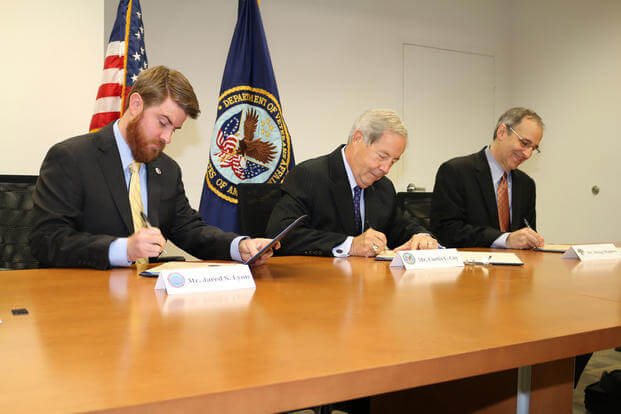On October 29, the Department of Veterans Affairs, the Student Veterans of America (SVA), and the National Student Clearinghouse signed a Memorandum of Agreement to track and measure the academic outcomes of student veterans using the Post-9/11 GI Bill. The program is known as the National Veteran Education Success Tracker and it builds upon the SVA Million Records Project.
The Million Records Project is a public-private partnership which began in 2013. The Million Records Project initally studied a random sample of approximately 1 million student veteran records based on their use of the Montgomery and Post-9/11 GI bills from 2002 to 2010. The research examined:
- the rate of degree completion among veterans
- the amount of time it takes veterans to receive a degree
- the highest degree veterans attain
- a breakdown of degree fields that veterans are enrolled in
The data gathered from the first phase of the Million Records Project allowed comparisons of how different schools serve veterans, and how veterans fare in comparison to the general student population.
This second phase of the project, which is set for release in April of 2016, will look at veterans using the Post-9/11 GI Bill in a more detailed light, measuring such factors as:
- how often veterans transfer among schools
- when in their academic careers veterans withdraw from school
- how long veterans remain enrolled in school
The National Student Clearinghouse will compare data provided by the VA with its own higher education data, which tracks graduation rates for 98% of all postsecondary students in the country.
The detailed data gathered in both phases of the Million Records Project should help government policymakers, the VA, veterans' service organizations, and schools develop solutions about how best to support veterans in higher education, and help tailor existing services and products to make them more efficient and effective. The sample in this study will include veterans who used the Post-9/11 GI Bill from its inception in August of 2009 through the end of 2013.
In fiscal year 2014 nearly 800,000 veterans used the Post-9/11 GI Bill at a price to taxpayers of nearly $11 billion.






